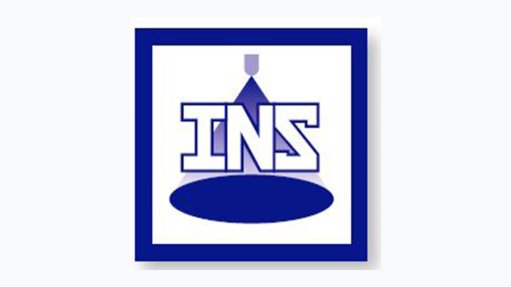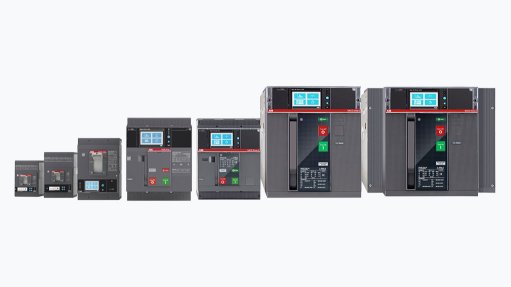Unilever ring-fences €1bn for Clean Future initiative
Consumer goods company Unilever has launched its Clean Future initiative, which is aimed at engendering sustainability in the way it produces products and renders services.
During a virtual launch of the initiatives on October 22, the company explained that it was seeking to transform its cleaning products to become lower carbon and lower waste, while still delivering the same quality of performance, or even enhancing it in some instances, through scientific developments.
The company has ring-fenced €1-billion for its Clean Future strategy. This will finance biotechnology research, carbon dioxide (CO2) use, low-carbon chemistry, biodegradable and water-efficient formulations and reducing the use of virgin plastic.
Unilever noted that while its products have always been of high quality in terms of performance, the sustainability of their entire life cycle needs much work.
Through scientific advancement, this will ensure that quality is not compromised.
Moreover, the company assured that the products would remain affordable.
Unilever is aiming to use renewable or recycled carbon sources above ground, to move away from its dependence on nonreplaceable fossil fuels from underground.
Through the Clean Future initiative, Unilever aims to replace 100% of the carbon derived from fossil fuels in its Home Care formulations with renewable or recycled carbon by 2030, which it said was ambitious.
Moreover, across Unilever, the company has committed to achieving a deforestation-free supply chain by 2023; ensuring net zero carbon emissions from all its products, from cradle to shelf, by 2039; halving the greenhouse-gas (GHG) impact of its products across their lifecycle by 2030; and aiming for its product formulations to be biodegradable by 2030.
Further, in terms of packaging, it has committed to halving its use of virgin plastic packaging, helping to collect and process more plastic packaging than it sells, ensuring all of its plastic packaging is reusable, recyclable or compostable by 2025 and using at least 25% recycled plastic in its packaging, also by 2025.
In terms of its endeavours to decarbonise its product formulations, the company stressed that it had to diversify the carbon sources that it uses.
It has termed its plan for this the ‘carbon rainbow’, which would entail measures such as taking carbons from plants (green carbon), the atmosphere (purple carbon), marine sources such as algae (blue carbon) and waste materials like plastic (grey carbon).
Unilever is also working with its innovation partners to create an entire new generation of cleaning polymers and fragrances that do not persist in the environment, to ensure its products do not leave any trace behind.
To reduce the amount of GHG emissions from its Home Care products, Unilever is designing them with fewer, but higher-performing ingredients.
This includes formats such as laundry capsules; refill and dilutable systems that are more affordable and cut plastic waste and GHG emissions; and concentrated liquids and powders.
The company said this had enabled it to reduce the carbon footprint of some of its cleaning products by over 66%.
Further to reducing the energy and water needed to create its packaging and ingredients, Unilever is aiming to reduce the environmental impact of the use of its products in people’s homes, especially in terms of washing clothes.
Therefore, it is developing new products and formulations that work well even at low temperatures, require less water for rinsing or even no water at all.
Further, it is also encouraging people to choose quick wash cycles to save on water and energy.
Unilever enthused that its Clean Future strategy was already supporting industry-leading projects around the world.
For example, soda ash is a key ingredient in laundry detergents; however, it is currently made using a lot of energy from fossil fuels.
The company has, therefore, partnered with Tuticorin Alkali Chemicals in southern India and Carbon Clean Solutions, which have pioneered a method to capture CO2 from their own production processes before it reaches the atmosphere, and use the captured CO2 as a raw material to make their soda ash.
Moreover, in Slovakia, it is partnering with biotech leader Evonik Industries to develop rhamnolipids, a renewable and biodegradable surfactant which is already used in the company’s Sunlight (Quix) dishwashing liquid in Chile and Vietnam.
The company hopes to significantly scale and build from both technologies.
Article Enquiry
Email Article
Save Article
Feedback
To advertise email advertising@creamermedia.co.za or click here
Comments
Press Office
Announcements
What's On
Subscribe to improve your user experience...
Option 1 (equivalent of R125 a month):
Receive a weekly copy of Creamer Media's Engineering News & Mining Weekly magazine
(print copy for those in South Africa and e-magazine for those outside of South Africa)
Receive daily email newsletters
Access to full search results
Access archive of magazine back copies
Access to Projects in Progress
Access to ONE Research Report of your choice in PDF format
Option 2 (equivalent of R375 a month):
All benefits from Option 1
PLUS
Access to Creamer Media's Research Channel Africa for ALL Research Reports, in PDF format, on various industrial and mining sectors
including Electricity; Water; Energy Transition; Hydrogen; Roads, Rail and Ports; Coal; Gold; Platinum; Battery Metals; etc.
Already a subscriber?
Forgotten your password?
Receive weekly copy of Creamer Media's Engineering News & Mining Weekly magazine (print copy for those in South Africa and e-magazine for those outside of South Africa)
➕
Recieve daily email newsletters
➕
Access to full search results
➕
Access archive of magazine back copies
➕
Access to Projects in Progress
➕
Access to ONE Research Report of your choice in PDF format
RESEARCH CHANNEL AFRICA
R4500 (equivalent of R375 a month)
SUBSCRIBEAll benefits from Option 1
➕
Access to Creamer Media's Research Channel Africa for ALL Research Reports on various industrial and mining sectors, in PDF format, including on:
Electricity
➕
Water
➕
Energy Transition
➕
Hydrogen
➕
Roads, Rail and Ports
➕
Coal
➕
Gold
➕
Platinum
➕
Battery Metals
➕
etc.
Receive all benefits from Option 1 or Option 2 delivered to numerous people at your company
➕
Multiple User names and Passwords for simultaneous log-ins
➕
Intranet integration access to all in your organisation
















